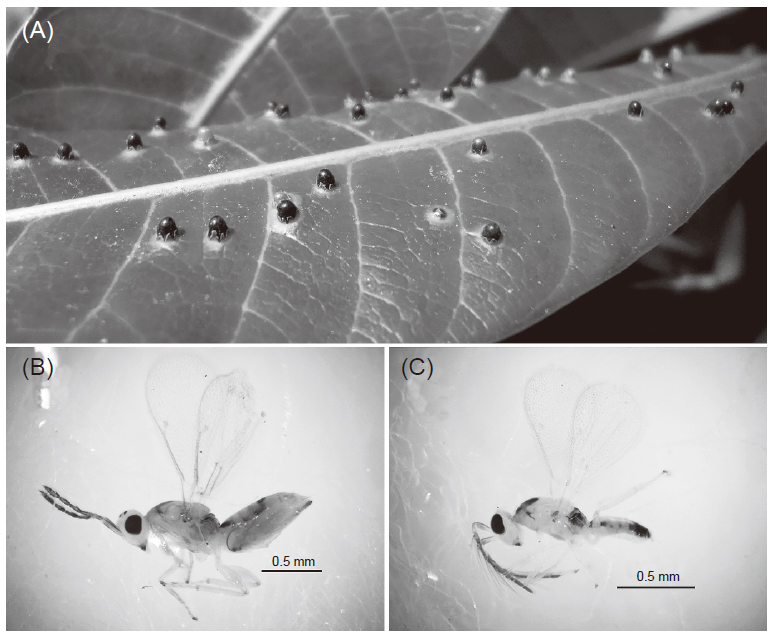All issues
Author:Sheng-Feng Lin, Shi-Shun Wang, Ang-Shing Lee, Man-Miao Yang, and Hsiou-Hua Hao*
Abstract:
The investigations on the parasitism and ovipositional behavior of Aprostocetus sp. were done on mango pest cecidomyiid, Procontarinia robusta, in providing fundamental information for developing biocontrol tactics. The parasitism was 11–19% at two sampling localities of Kaohsiung City in April and October 2015. Number of galls per leaf is positively correlated to the number of parasites per leaf (r = 0.785, P < 0.001) but insignificantly correlated to the percentage parasitization (r = -0.291, P = 0.213). It indicates that parasitism is not affected by population size of P. robusta. Besides, the parasitism of gall on apricus branch (19.3% ± 3.2%, n = 9) is significantly higher than that on downsun branch (4.9% ± 2.6%, n = 9), indicating the parasitism is influenced by environmental factor. The ovipositional phase of Aprostocetus sp. is associated with growth and differentiation stage and maturation stage of midge gall. The adult wasp lays the egg on abaxial side of leaf and most emergent adult leaves gall from adaxial side of leaf. The longevity of adult wasp treated with 20% honey water (9 d ± 1 d, n = 12) is higher than those in the treatment with no food (4 d ± 1 d, n = 12). The results showed that planting nectar plants could have positive biological control effect by prolonging the longevity of the Aprostocetus parasitoid. The biological rhythm and release test of Aprostocetus sp. is needed to evaluate biocontrol effectiveness of natural enemy on P. robusta in further studies.
Key words: Procontarinia robusta, Aprostocetsu sp., Parasitic phase, Ovipositor behavior, Biological control
Download:![]() PDF Links
PDF Links
- 1. Using Digital Soil Mapping to Predict Soil Organic Carbon Stocks in Zhuoshui River Basin
- 2. Development of a Technique for Forecasting (or Pre-Detection) Anthracnose Disease Incidences of Green Mature Bagging Mango Fruits
- 3. Taxonomic Review of the Genus Asiophrida Medvedev, 1999 in Taiwan (Insecta: Coleoptera: Chrysomelidae: Galerucinae: Alticini), with Notes on Biology

 Submit your manuscript
Submit your manuscript
 Guide for authors
Guide for authors